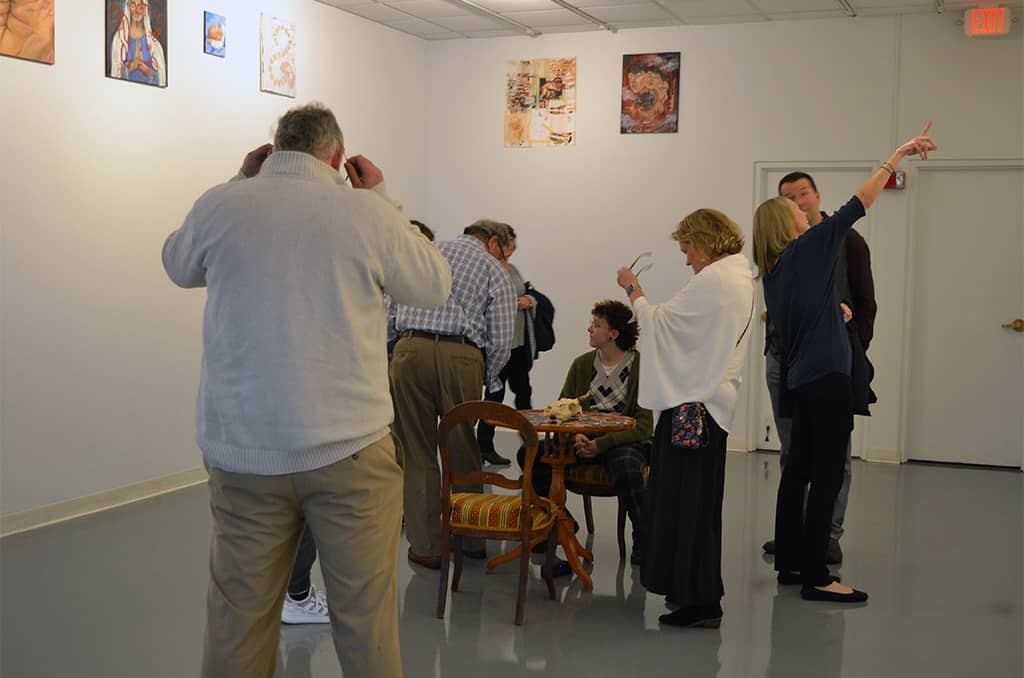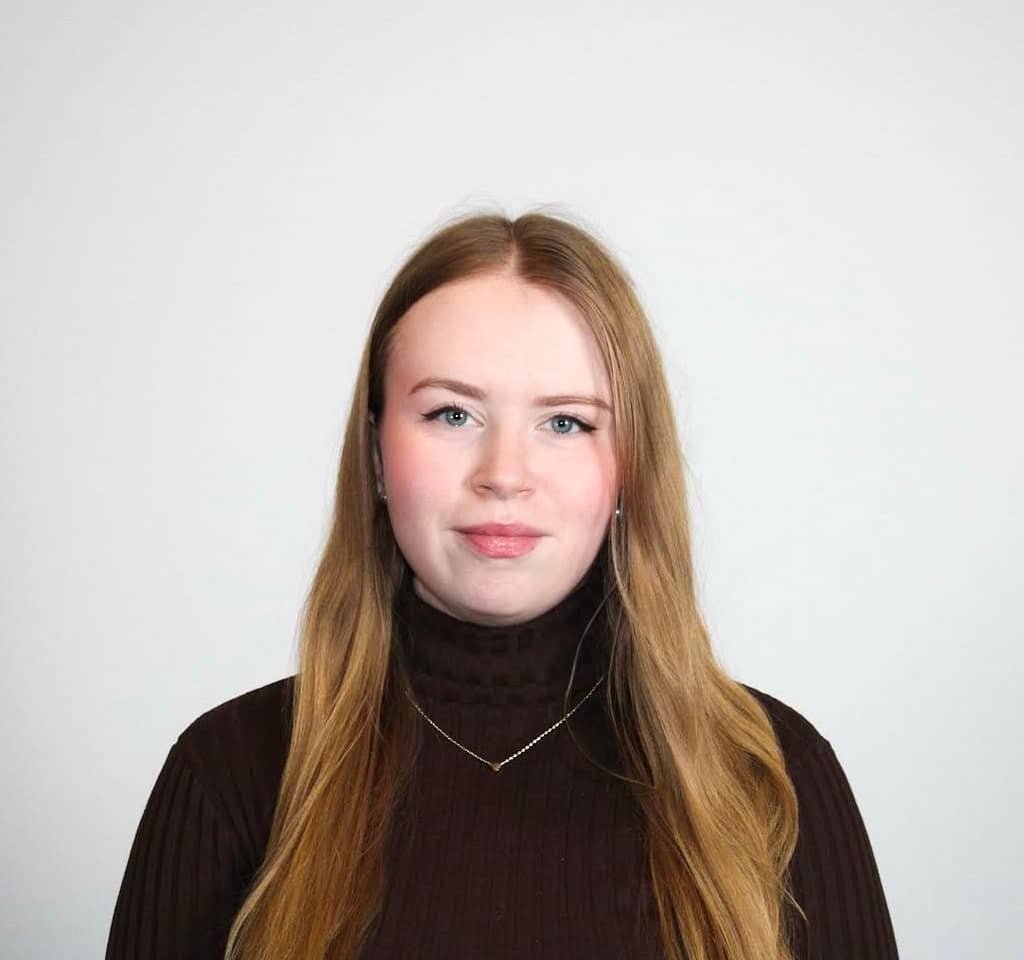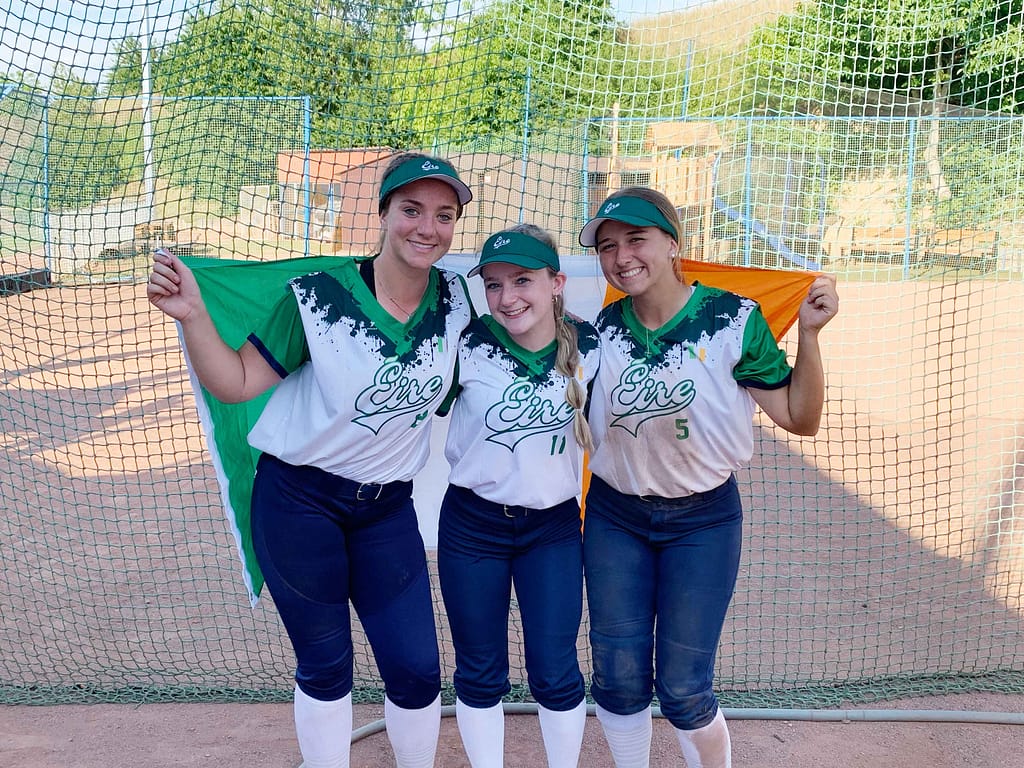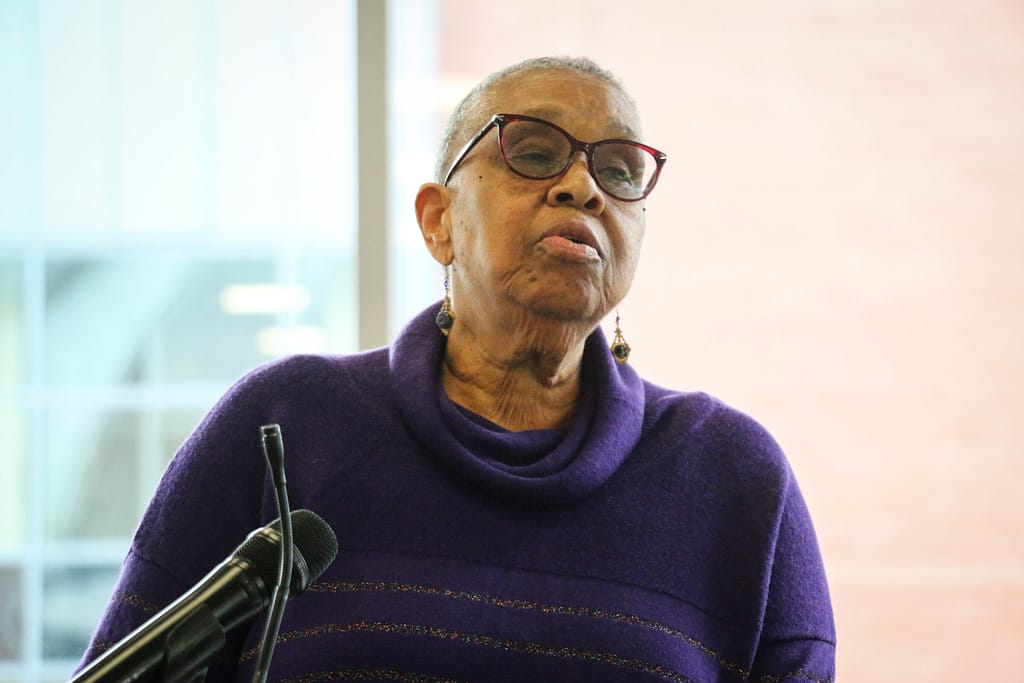Students co-author DNA research paper

The small file photo directly above from 2013 is of Jo Ellis-Monaghan, left and Greta Pangborn with models of DNA structures.
Two Saint Michael’s students and a recent graduate are co-authors on a paper that recently was accepted to the peer-reviewed Journal of Mathematical Chemistry.
“The students did very strong work here,” said Jo Ellis-Monaghan of the College’s mathematics faculty, who with Greta Pangborn of the computer science faculty was a co-author and mentor to the students in their research. Student co-authors on the paper were current Saint Michael’s seniors Rebecca Rouleau ‘18 and Anna Cook ’18, and recent graduate Alana Houlihan ’17.
These three worked together in the summer of 2016 with some follow-up during the next year, building on extensive ongoing research from many prior Saint Michael’s students who have been mentored by Ellis-Monaghan and Pangborn. Through their DNA self-assembly work with students over the last decade, the professors are pioneers in mentoring summer research at Saint Michael’s, which today is a vital, widespread and expanding enterprise.
This recent paper was a true liberal arts enterprise: Cook is an English major, while Houlihan and Rouleau are mathematics majors; collaborators and co-authors beyond Saint Michael’s were chemist Ned Seeman of New York University, one of the pioneers of DNA self-assembly who is responsible for one of the first successful assembly methods, and mathematician Margherita Ferreri, until recently a graduate student in the Department of Mathematics, Politecnico di Milano, Milano, Italy, when her work relating to the paper formed part of her dissertation – she is now at the University of Florida.
Their work is supported through the National Science Foundation through “Research Experiences for Undergraduates” grants (REU). Rouleau, a Barre, VT, native, said, “It’s exciting to see our work published for a larger audience, with real-world applications in the math and chemistry communities. It was really fun to work on a project that was simple in theory but very complex once we delved in further. The REU was a great experience in what math research entails, and it allowed us to become experts on this particular problem, which is pretty cool.”
Cook, from Bradford, VT, said, “I’m thankful for this REU because it was my first work experience that gave me the opportunity to employ my skills in math, writing, and art, three interests that, prior to this project, I hadn’t considered combining in a future career. It was also really gratifying to work with such talented Saint Michael’s professors and work through frustration and successes with some awesome students who I might not have met otherwise.”
An abstract describes the paper’s topic: “We describe the half-lap model, a mathematical framework that captures the geometric constraints of rigid tiles that are branched junction molecules used as building blocks for tile-based DNA self-assembly. The model captures not only the combinatorial structures of the sets of cohesive ends on the tiles, but also the specific geometry of the inter-arm angles of the tiles and most critically the relative orientations of adhering tiles. We illustrate the functionality of the model by providing provably optimal DNA self-assembly strategies to construct Platonic and Archimedean 3-regular polyhedral skeletons.”
Ellis-Monaghan, chair of Saint Michael’s Department of Mathematics and Statistics and Editor-in-Chief of the publication PRIMUS, a journal about problems, resources, and issues in mathematics undergraduate studies, explained in plainer language the context of this imposingly technical-sounding work.
“The properties of DNA strands allow scientists to engineer DNA so it self-assembles into sophisticated 2D and 3D structures for applications such as nano-scale circuitry, robotics, and pharmaceuticals,” she said. “However, there are many mathematical challenges involved in the various assembly methods emerging from today’s laboratories. In an example of out-of-the box innovation, this work uses woodworking technique half-lap splice joints as a basis for the theoretical mathematical model of DNA self-assembly, providing provably optimal design strategies to scientists working with DNA self-assembly.”
She said the mathematics of self-assembly is a very new area, “so although it requires hard, creative thinking and serious problem formulation work, many aspects can be approached from first principles, so it is particularly suitable for undergraduate involvement.” Furthermore, she said, “the work is highly interdisciplinary, with research teams, such as the authors on this paper, frequently including professional collaborators and students from mathematics, computer science, physics, biology, and even English and art.”





